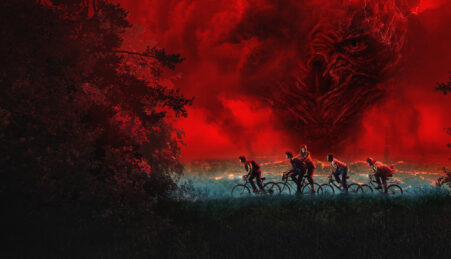
By Kass Jawaid
Earlier this month, Manchester Metropolitan University students and staff travelled to Imperial War Museum North for a guided tour, and an on-site lecture and seminar.
The trip was organised by Professor Antony Rowland as part of the English department’s ‘Representing Trauma’ unit, which explores representations and collective memories of the Holocaust.

Photograph by Molly McConville
The image to the left displays artwork created by Chava Rosenzweig in which she explores the impact of the Holocaust on second and third generation survivors, such as herself. Rosenzweig’s artwork, known as ‘A Star Shall Stride From Jacob And A Sceptre Bearer Shall Rise’, consists of 630 porcelain stars. The stars represent the Star of David, a symbol of pride for Jewish people that was later turned into a symbol of humiliation by the Nazis. Under the Nazi regime, Jewish men, women and children were forced to wear stars labelled ‘Jude’ (meaning ‘Jew’) and they were targeted by those enacting Nazi discrimination. Each star, placed on the striped uniforms (or ‘striped pyjamas’) of Nazi prisoners, has entered a gas kiln and has ‘survived’, and have been affected by the process. The Holocaust has affected and shaped people’s identities – many survivors, for instance, moved to America, started families and careers and grew old. It could be argued that we learn about the Holocaust to prevent history, or this type of mass genocide, from repeating itself.
Daniel Lebeskind, a Berlin-based architect, well known for buildings such as the Jewish Museum (or the “zig-zag” museum) in Berlin, and the extension to the Denver Art Museum in Colarado, the United States, designed the Imperial War Museum North Museum. The museum opened in July 2002 and received 470,000 visitors in its first year of opening. The museum overlooks the Manchester Ship Canal in Trafford Park, an area that, during the Second World War, was a key industrial centre and consequently heavily bombed during the Manchester Blitz in 1940. The steel-looking appearance of the museum seemingly blends in with the industrial history of Manchester. Libeskind visualised a ‘constellation composed of three interlocking shards’ with each shard representing a globe ‘shattered’ by conflict. These shards represent air, earth and water (the three elements exploited and stained by war and death) and the final product – the museum, which represents the aftermath of the war – reveals the failure to re-piece the globe to a previous time of structured stability.
In conclusion, the trip to the Imperial War Museum North was an aesthetically pleasing and instructive experience as students wandered through the museum, observed artwork, and discussed and debated the varied representations of trauma and the Holocaust. Art is subjective; everything is open to interpretation.







Leave a reply